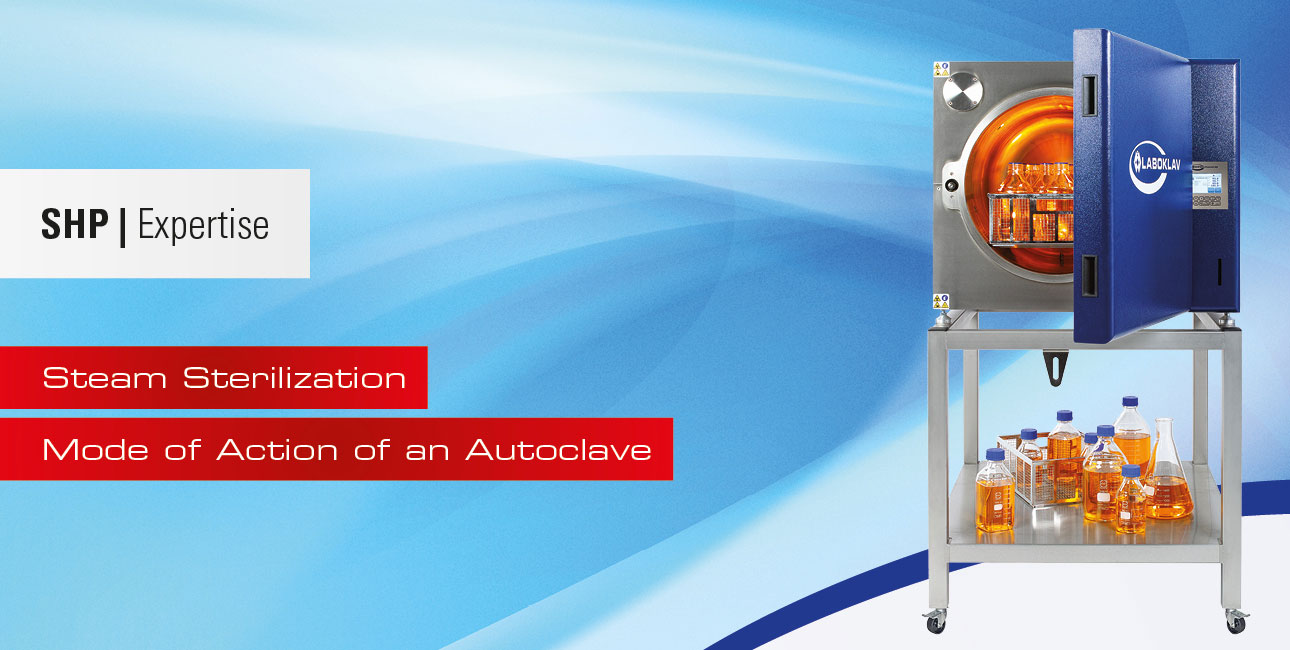In medicine and biotechnology, a sterilizer that uses hot, saturated steam to kill microorganisms is referred to as an autoclave.
This is how an autoclave works.
The hot saturated steam condenses on the cooler items being sterilized, releasing its energy. This causes the proteins in the cells to coagulate and the cells to be destroyed. However, not only moist heat as a heat carrier affects the mortality of an organism—the water content within the cell also plays a crucial role. The lower the water content, the higher the heat resistance. This is why killing bacterial spores is so demanding!
When is something considered sterile?
Sterile means that no viable microorganisms are present (according to EN 556). This includes the destruction of microorganisms and their dormant stages. In practice, this state can never be confirmed with absolute certainty. For the sterilization of medical products, a product may be labeled “sterile” if the probability that a viable microorganism is present on or in the product is less than or equal to 1 x 10^-6. To achieve this goal, certain conditions must be met during sterilization.
The most important process parameters are:
- Sterilization time
- Sterilization temperature
- Humidity
Accurate monitoring of these parameters is crucial for quality assurance.
Advantages of steam sterilization
- Saturated steam with high energy content as an extremely effective sterilizing medium
- Fast and reliable inactivation of microorganisms such as bacteria, fungi, spores, viruses, and parasites
- Uniform distribution of steam throughout the sterilization chamber
- Effective steam penetration even in porous items
- Non-toxic, cost-effective, and universally available sterilizing agent
- No residues are left on the sterilized items
Effect of moist heat on microorganisms
Steam sterilization uses temperatures that exceed the optimal and maximum growth temperatures of microorganisms. Empirically, the various types of germs can be divided into several resistance levels. Each of these levels corresponds to specific disinfection or sterilization methods.
Examples of heat resistance to moist heat [Wallhäußer, 1988]
Source: Praxis der Sterilisation, Desinfektion, Konservierung. Thieme, Stuttgart 5th edition 1995 (Wallhäuser, K.-H.)
| Resistance Level | Method | Organism (Examples) | Temperature (°C) | Time (min.) |
|---|---|---|---|---|
| I | Pasteurization | Pathogenic streptococci, listeria, polioviruses | 61.5 | 30 |
| II | Mild Heating | Most vegetative bacteria, yeasts, molds, all viruses except hepatitis B | 80 | 30 |
| III | Boiling | Hepatitis B viruses, most fungal spores | 100 | 5 - 30 |
| IV | Pressurized Steam | Bacillus anthracis spores | 105 | 5 |
| V | Pressurized Steam (Standard Procedure) | Bacillus stearothermophilus Spores | 121 | 15 |
| VI | Pressurized Steam | Prions | 134 | 60 |
[1] Another way to kill microorganisms by heat is oxidation. This process is used in sterilization with dry heat. Proteins are heated so intensely that they burn (oxidize). To achieve this, significantly higher temperatures are required.






